
Fundamentals
In the tender landscape of textured hair, where each coil and wave holds a story, understanding the porosity of one’s strands stands as a cornerstone of genuine care. Porosity, at its most fundamental, offers an explanation of how your hair’s outermost layer, the cuticle, interacts with moisture. Imagine the cuticle as a delicate shield, composed of overlapping scales, much like the shingles on a roof.
The way these scales lie—whether tightly closed or slightly lifted—determines the hair’s ability to absorb and retain water, oils, and other nourishing substances. This fundamental meaning guides our initial approach to nurturing hair, especially for those with Black or mixed hair heritage, where moisture retention is a frequent consideration.
The significance of this understanding extends beyond mere science; it becomes a dialogue with your hair, a quiet conversation about its thirst and how best to quench it. When we speak of porosity, we are truly speaking of the hair’s capacity for hydration, its readiness to welcome beneficial ingredients, and its ability to hold onto that goodness. A deep comprehension of this aspect helps unravel common hair frustrations, transforming them into opportunities for tailored care.
Porosity, the hair’s delicate shield, dictates its interaction with moisture, a crucial insight for textured hair care.

The Hair’s Outer Layer ❉ A Closer Look at the Cuticle
The cuticle, the hair’s protective shell, is comprised of transparent, thin cells arranged in an overlapping pattern along the hair shaft. This arrangement is not merely decorative; it serves a vital purpose in safeguarding the inner layers of the hair. The integrity of these scales directly influences how well the hair fiber is protected from external stressors and how efficiently it can absorb and retain moisture.
For individuals with textured hair, particularly those with tighter curl patterns, the natural twists and turns of the hair shaft can cause the cuticle scales to lift at various points, leading to a predisposition for higher porosity. This inherent structural characteristic means that textured hair often possesses a natural tendency to lose moisture more quickly than straight hair types.

Why Porosity Matters for Textured Hair
The distinction of porosity becomes particularly pronounced within the realm of textured hair. Our curls, coils, and waves possess a unique architecture, which, while beautiful, also presents specific considerations for moisture management. The very configuration of textured hair, with its elliptical cross-section and frequent bends, can inherently influence how its cuticle layers behave. This natural predisposition means that understanding your hair’s porosity is not merely a technicality; it is a profound step toward cultivating a hair care regimen that truly speaks to your strands’ individual needs.
- Moisture Absorption ❉ The ease with which water penetrates the hair shaft. Hair with tightly packed cuticles (low porosity) resists water entry, while hair with more open cuticles (high porosity) absorbs it readily.
- Moisture Retention ❉ The hair’s ability to hold onto hydration once absorbed. This is equally important, as highly porous hair can lose moisture as quickly as it takes it in.
- Product Effectiveness ❉ How well hair care products deliver their active ingredients. Porosity directly impacts the efficacy of conditioners, oils, and stylers.

Simple Ways to Begin Your Porosity Understanding
For those embarking on their hair care journey, simple observations can provide initial insights into their hair’s porosity. These methods, while not scientific measurements, offer a helpful starting point for daily care adjustments.
- The Water Test ❉ Gently place a clean, product-free strand of hair into a glass of room-temperature water. If the strand floats near the top, it suggests low porosity. If it sinks slowly, it may indicate medium porosity. If it sinks quickly to the bottom, it often points to high porosity. This straightforward observation provides a visual cue regarding the hair’s immediate interaction with water.
- Drying Time Observation ❉ Notice how long your hair takes to air dry after washing. Hair that takes a considerable amount of time to dry often indicates low porosity, as moisture struggles to evaporate from beneath its tightly sealed cuticles. Conversely, hair that dries very quickly might suggest higher porosity, as water escapes with ease.
- Product Absorption Awareness ❉ Pay attention to how products absorb into your hair. If conditioners and oils tend to sit on the surface, requiring extra effort to work in, it could signal low porosity. If products seem to disappear instantly, leaving the hair feeling dry shortly after application, high porosity might be at play.
These initial observations form the foundation of porosity awareness, guiding you toward a more intuitive and responsive approach to your textured hair’s unique requirements.

Intermediate
Moving beyond the foundational insights, an intermediate understanding of Porosity Understanding deepens our appreciation for its practical implications in the daily rhythm of textured hair care. This involves discerning the distinct characteristics of low, medium, and high porosity hair, and subsequently, tailoring product choices and application techniques to harmonize with each hair type’s unique needs. It is a nuanced interpretation, shifting from a simple observation to a strategic engagement with the hair’s inherent structure. The concept of porosity extends into the very fabric of our hair care rituals, influencing everything from the temperature of water we use to the layering of our beloved botanical extracts.
The pursuit of vibrant, healthy textured hair is often a path of discovery, where recognizing the subtle signals from our strands becomes paramount. A more developed grasp of porosity empowers us to make informed decisions, moving past generic advice to embrace methods that truly nourish and protect. This level of comprehension illuminates why certain ingredients perform differently on various hair types, guiding us towards a more intuitive and effective care regimen.
An intermediate grasp of Porosity Understanding enables a strategic, informed approach to textured hair care, aligning practices with the hair’s unique moisture dynamics.

Delineating Porosity Types ❉ A Deeper Characterization
Hair porosity exists along a spectrum, though it is often categorized into three primary levels to simplify understanding and guide care practices. Each category possesses distinct behaviors when interacting with moisture and products.

Low Porosity Hair
Hair with low porosity is characterized by tightly bound cuticle layers that lie flat against the hair shaft. This compact structure creates a resilient barrier, making it challenging for moisture to penetrate. Water often beads on the surface, and products may accumulate rather than absorbing readily. This hair type can feel quite smooth, yet it may also appear resistant to treatments, leading to a feeling of dryness despite product application.
- Characteristics ❉ Cuticles tightly closed, resists moisture absorption, products tend to sit on top, takes a long time to wet and dry, can appear shiny.
- Care Considerations ❉ Opt for lightweight, liquid-based products that can more easily pass through the compact cuticle. Gentle heat, such as from a steamer or warm towel, can help to lift the cuticles temporarily, allowing for deeper penetration of conditioners. Regular clarification is also beneficial to prevent product buildup that can further impede moisture entry.
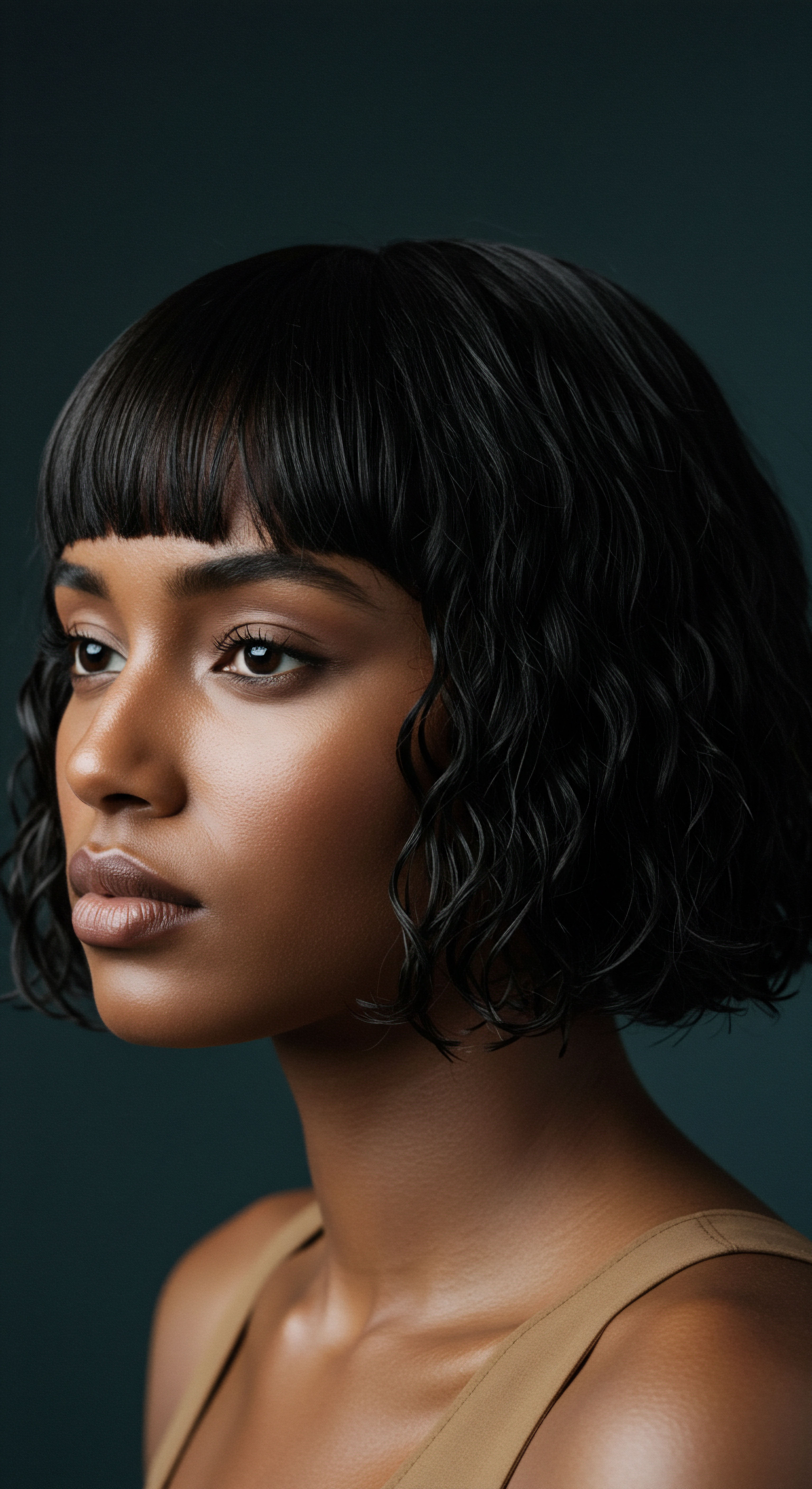
Medium Porosity Hair
Often considered the “ideal” porosity, medium porosity hair features cuticle layers that are neither too tightly sealed nor overly open. This balanced structure allows for efficient absorption of moisture and nutrients while also retaining them for a reasonable duration. Hair with medium porosity generally responds well to a wide range of products and styling techniques, exhibiting good elasticity and a healthy appearance.
- Characteristics ❉ Balanced moisture absorption and retention, good elasticity, generally responds well to most products, takes a moderate time to wet and dry.
- Care Considerations ❉ Maintain a balanced routine. Products with a moderate protein-moisture balance often work well. While it is adaptable, avoiding excessive heat or harsh chemical treatments helps preserve its balanced state.
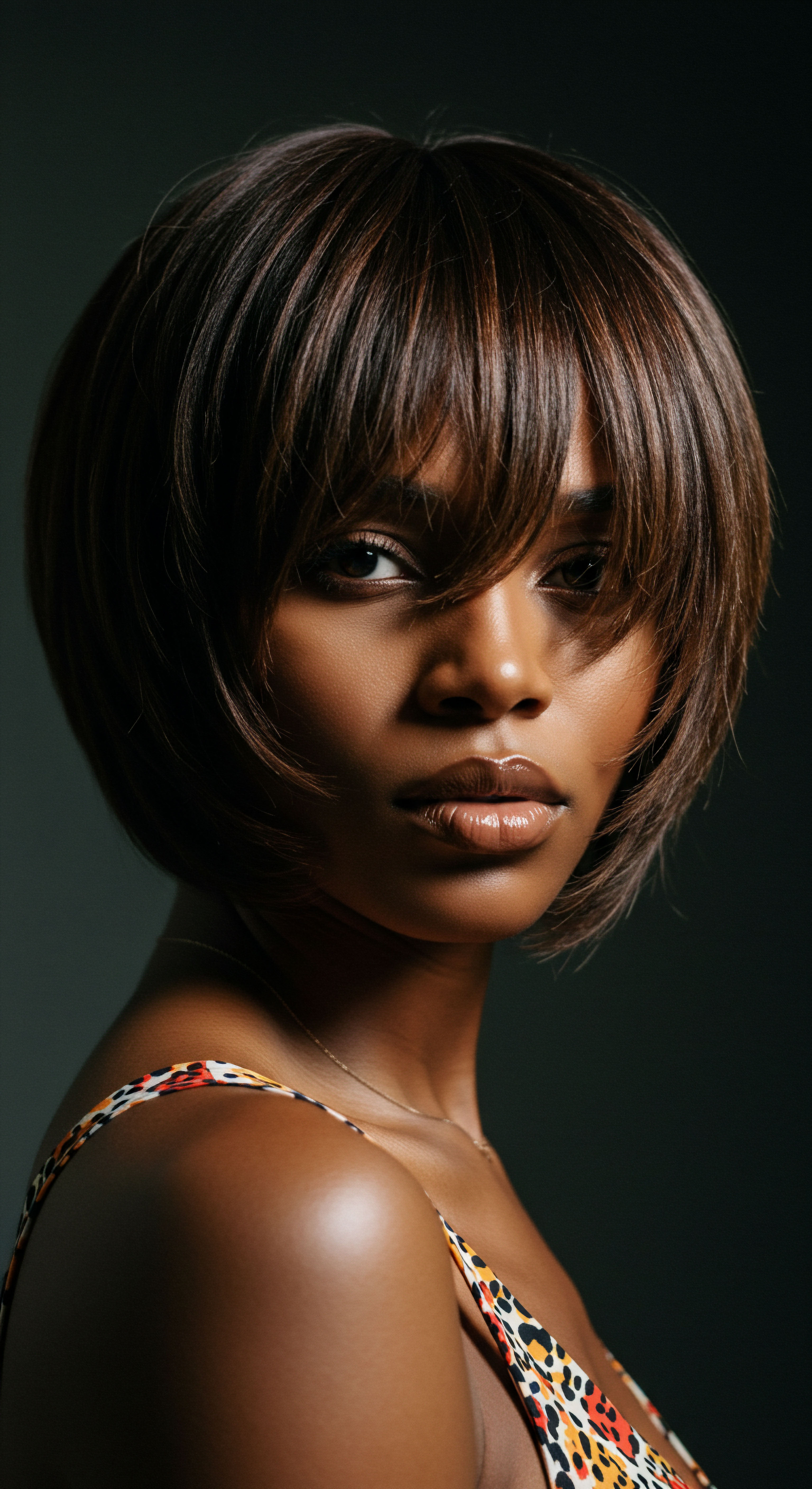
High Porosity Hair
High porosity hair possesses cuticle layers that are lifted, spaced apart, or even damaged, creating gaps through which moisture can easily enter and escape. This hair type absorbs water quickly, yet it loses hydration just as rapidly, often resulting in persistent dryness, frizz, and increased susceptibility to breakage. The open cuticle can be an inherent genetic trait, particularly in textured hair, or it can result from chemical treatments, heat styling, or environmental damage.
- Characteristics ❉ Cuticles are open or damaged, absorbs moisture quickly but loses it rapidly, prone to frizz and dryness, often feels rough, may appear dull.
- Care Considerations ❉ Focus on sealing moisture into the hair shaft. Layering products, such as using a leave-in conditioner followed by an oil and then a cream (the LCO or LOC method), can help to seal the cuticle and prevent moisture loss. Heavier creams and butters, along with protein-rich treatments, can also aid in temporarily filling gaps in the cuticle, providing structural support and improving moisture retention.
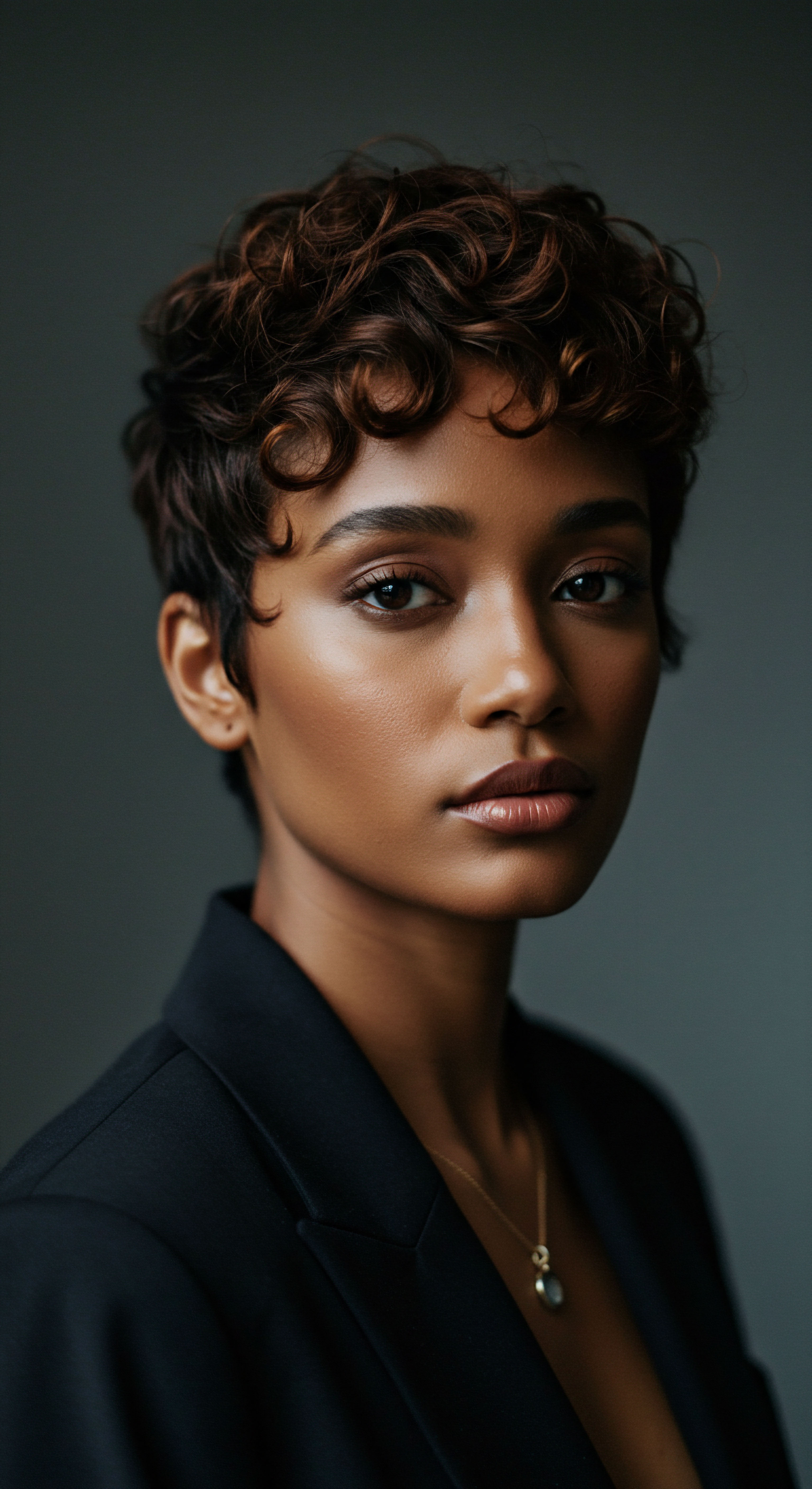
The Influence of Hair Care Rituals on Porosity
Our daily and weekly hair care rituals play a significant role in influencing the hair’s porosity over time. While genetics provide a baseline, how we treat our hair can either maintain its natural state or alter its structural integrity.
For instance, the frequent use of high heat from styling tools like flat irons and curling wands, or repeated chemical processes such as relaxers and color treatments, can lift and damage the cuticle layers, increasing hair porosity. This is particularly pertinent for textured hair, which, due to its unique structure, may already be more vulnerable to certain types of damage. Conversely, consistent use of gentle cleansing methods, protective styling, and nourishing treatments can help maintain cuticle health, preserving the hair’s natural moisture balance.
Consider the historical and cultural context of hair care within Black and mixed-race communities. For generations, practices aimed at altering natural hair textures to conform to Eurocentric beauty standards often involved harsh chemical relaxers and intense heat, which demonstrably increased hair porosity and susceptibility to breakage. The modern natural hair movement, by contrast, often champions practices that prioritize moisture and cuticle health, reflecting a deeper understanding of hair’s intrinsic needs.
| Practice Chemical Relaxers |
| Potential Porosity Impact Increases porosity significantly |
| Notes for Textured Hair Causes structural damage, weakens hair shaft, and can lead to breakage. |
| Practice Heat Styling (Flat Irons, Blow Dryers) |
| Potential Porosity Impact Can increase porosity, especially with frequent use |
| Notes for Textured Hair Damages cuticles, leading to moisture loss and increased frizz. |
| Practice Color Treatments (Bleaching, Dyeing) |
| Potential Porosity Impact Increases porosity through cuticle oxidation |
| Notes for Textured Hair Very aggressive to hair structure, causing protein loss and cuticle wear. |
| Practice Deep Conditioning with Heat |
| Potential Porosity Impact Temporarily increases absorption for low porosity |
| Notes for Textured Hair Helps humectants penetrate tightly bound cuticles, improving moisture. |
| Practice Sealing with Oils/Butters |
| Potential Porosity Impact Helps retain moisture for high porosity |
| Notes for Textured Hair Forms a protective barrier, preventing rapid water loss. |
| Practice Understanding these impacts allows for more intentional and protective hair care choices. |

Advanced
The Porosity Understanding, at its most advanced and comprehensive, transcends a mere definition of hair structure; it represents a profound cognitive and practical integration of how the hair’s outermost layer, the cuticle, mediates its entire physiological and aesthetic experience. This advanced explication delves into the intricate interplay of genetic predispositions, environmental stressors, and historical care practices that collectively shape an individual’s hair porosity, particularly within the diverse landscape of textured hair. It is a scholarly delineation, one that recognizes porosity not as a static attribute, but as a dynamic indicator of hair health, reflecting biological realities, cultural narratives, and even psychological well-being. The true significance here lies in discerning the subtle mechanisms that govern moisture kinetics within the hair fiber, offering a framework for sophisticated interventions and a deeper appreciation for the unique resilience of Black and mixed-race hair.
This level of inquiry moves beyond simple categorization, inviting a detailed analysis of the biochemical underpinnings of cuticle integrity and the long-term consequences of various hair manipulations. It calls for an interpretation that is both scientifically rigorous and culturally sensitive, recognizing that hair is not simply a collection of fibers, but a powerful symbol of identity and heritage. The advanced Porosity Understanding, therefore, becomes a lens through which we can perceive the multifaceted dialogue between our bodies, our environments, and the legacies of our ancestors, all reflected in the intricate curl of a strand.
Advanced Porosity Understanding integrates genetic, environmental, and historical factors, revealing the dynamic interplay shaping textured hair’s physiological and aesthetic journey.
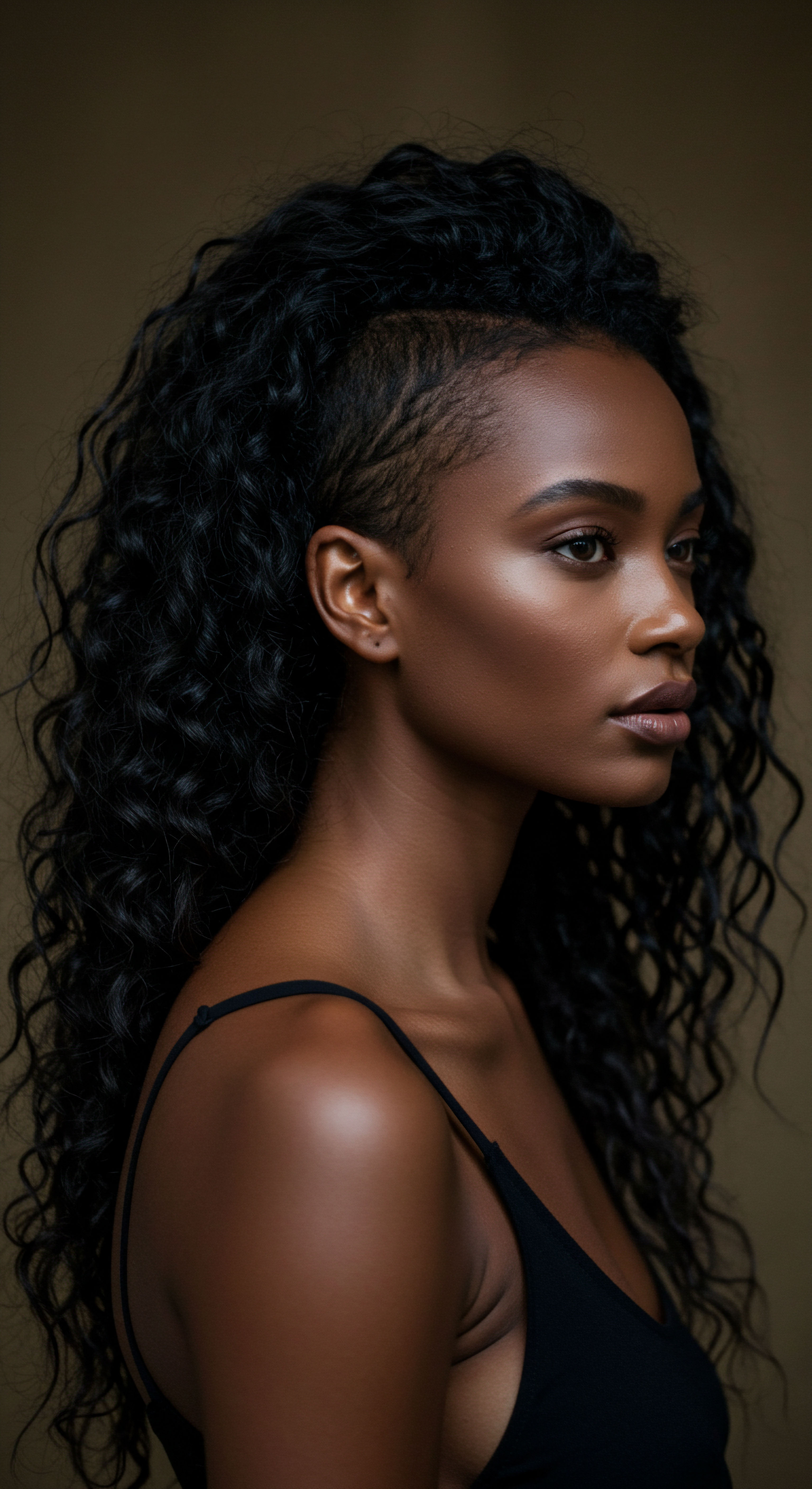
The Microscopic Delineation of Porosity
At a microscopic level, the cuticle’s configuration is a marvel of biological engineering. Each cuticle cell is composed of sub-lamellar layers, including the epicuticle, A-layer, exocuticle, endocuticle, and an inner layer. The epicuticle, the outermost component, features a lipid layer that contributes to the hair’s lubricity and its initial interaction with water. The density and integrity of these layers, along with the presence of intercellular lipids within the cell membrane complex (CMC) that bonds the cuticle layers, dictate the hair’s permeability.
For textured hair, particularly those with tight coils, the elliptical cross-section and the inherent twists along the fiber create points where cuticle scales may naturally lift or become less uniformly aligned compared to straight hair. This structural reality contributes to a greater surface area exposed to the environment and can predispose textured hair to higher porosity, making it more susceptible to moisture loss and external damage. This inherent structural vulnerability is a crucial consideration for developing targeted care strategies.

Genetic and Environmental Influences on Porosity
While hair porosity is often perceived as a result of care practices, genetics play a foundational role in determining an individual’s inherent porosity level. Genetic variations influence the cuticle structure, the distribution of keratin proteins, and the composition of surface lipids, all of which directly impact how tightly the cuticle scales lie. Research indicates that different genes influence hair texture and thickness across various ethnic backgrounds. For instance, studies have explored genetic factors influencing hair texture and porosity in African American women, identifying genes associated with cuticle structure and lipid production.
Environmental factors further compound this genetic blueprint. Exposure to ultraviolet radiation, humidity fluctuations, and mechanical stress from styling can all alter cuticle integrity, shifting porosity levels over time. Chemical treatments, such as relaxers, dyes, and bleaches, are particularly aggressive in their impact, causing significant structural damage, protein loss, and an undeniable increase in hair porosity. This transformation is not merely superficial; it fundamentally reconfigures the hair fiber’s ability to maintain its internal moisture balance.

Porosity as a Cultural and Historical Barometer for Black Hair
The understanding of hair porosity takes on a unique and poignant dimension when viewed through the lens of Black and mixed-race hair experiences. For centuries, societal pressures, often rooted in Eurocentric beauty standards, compelled Black women to chemically alter their hair textures to achieve straighter appearances. These practices, while offering a semblance of societal acceptance or professional conformity, inadvertently subjected textured hair to extreme porosity-inducing damage.
Consider the widespread use of chemical relaxers, a practice that historically reached staggering prevalence among African American women. A study involving 59,000 self-identified Black American women revealed that up to 95% had used relaxers at some point. This pervasive practice, while offering manageability and alignment with prevailing beauty ideals, demonstrably caused structural damage, increasing porosity and reducing hair strength. This created a paradox ❉ the pursuit of a desired aesthetic often came at the cost of hair health, manifesting as increased porosity, dryness, and breakage.
The prevalence of hair loss conditions like traction alopecia, affecting an estimated one-third of African-American women, is directly linked to prolonged tension from tight styles often applied to chemically treated, and thus more porous, hair. This historical context underscores a crucial point ❉ the collective journey of Porosity Understanding within Black communities has been, in many ways, a silent battle against externally imposed standards that exacerbated hair’s inherent structural vulnerabilities.
The resurgence of the natural hair movement, particularly since the 2000s, represents a powerful cultural shift, a collective reclamation of intrinsic beauty and a deeper engagement with the authentic needs of textured hair. This movement has propelled the Porosity Understanding into mainstream discourse within these communities, transforming it from a scientific concept into a tool for self-acceptance and informed care. The dialogue around porosity today is not just about product selection; it is about honoring heritage, challenging historical beauty norms, and fostering a relationship with one’s hair that is grounded in genuine nourishment rather than forced conformity.
The historical prevalence of chemical relaxers among Black women highlights a profound cultural intersection with hair porosity, where conformity often compromised hair health.
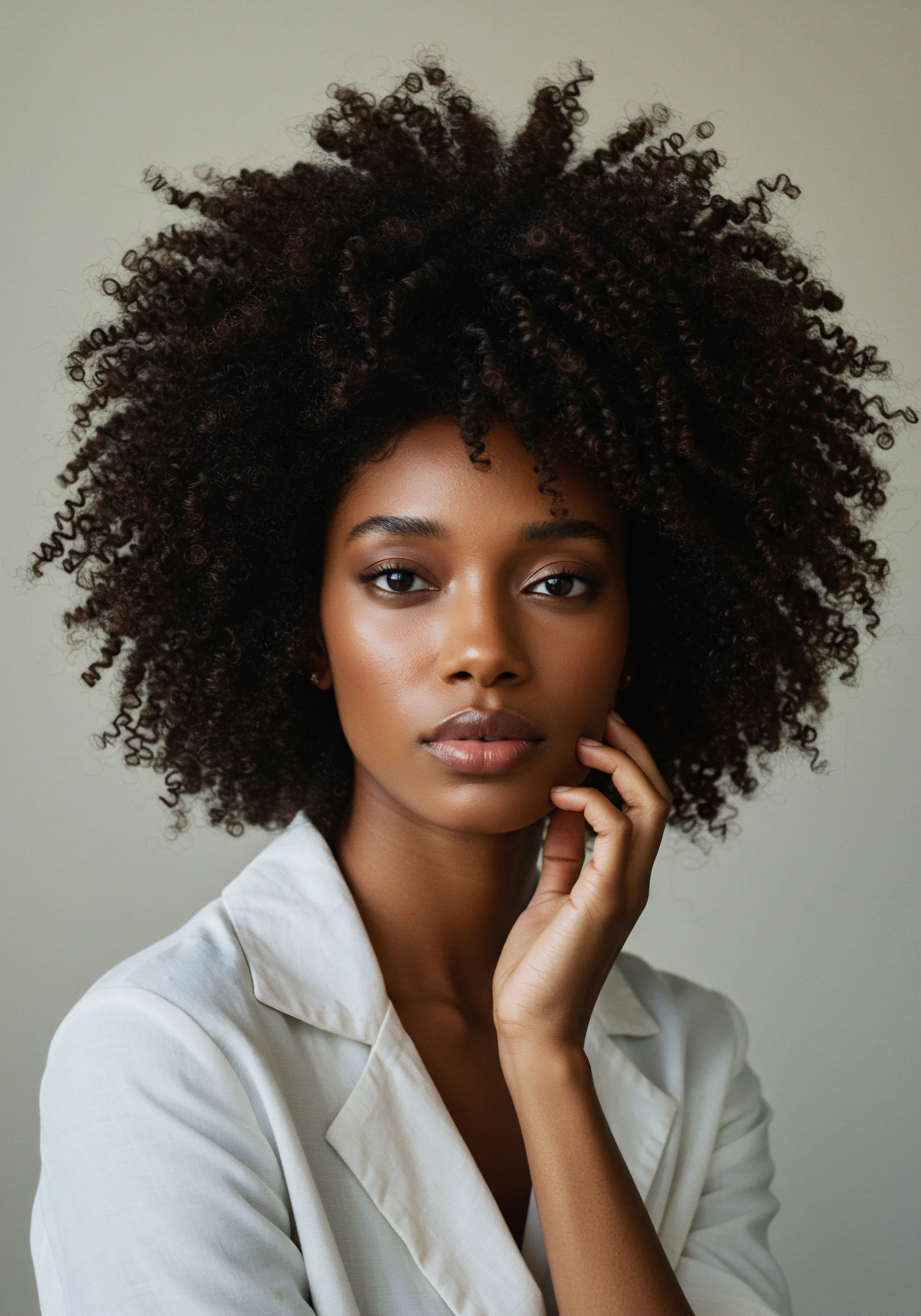
The Advanced Implications for Hair Care Science and Product Development
For cosmetic chemists and trichologists, an advanced Porosity Understanding guides the formulation of products with unparalleled precision. The goal is to create solutions that respect the unique physiology of textured hair, rather than attempting to force it into an unnatural state.
Advanced product development considers the molecular weight of ingredients, the pH of formulations, and the precise ratios of humectants, emollients, and proteins to address specific porosity concerns. For instance, low porosity hair benefits from humectant-rich, slightly acidic formulations (pH 4.5-5.5) that can gently encourage cuticle lifting for moisture absorption, along with lighter oils that do not sit on the surface. Conversely, high porosity hair thrives with protein-containing ingredients that can temporarily patch cuticle gaps, alongside heavier occlusive agents to seal in moisture.
The industry’s increasing interest in textured hair care has spurred research into innovative solutions. For example, some studies explore nanotechnology to deliver active ingredients deeper into the hair shaft, potentially revolutionizing moisture retention for low porosity hair. Similarly, understanding the unique distribution of keratin along the fiber of Afro-textured hair, which often results in an unequal thickness of the cuticle and a smaller diameter, guides the development of protective and repairing ingredients. This level of detailed scientific investigation aims to address the inherent challenges of moisture retention and breakage in textured hair, moving beyond generic solutions to truly bespoke care.
This refined interpretation of porosity allows for the creation of truly effective and empathetic hair care, acknowledging the scientific realities while honoring the cultural and personal significance of textured hair. It is a commitment to fostering hair health that is deeply rooted in both knowledge and respect.
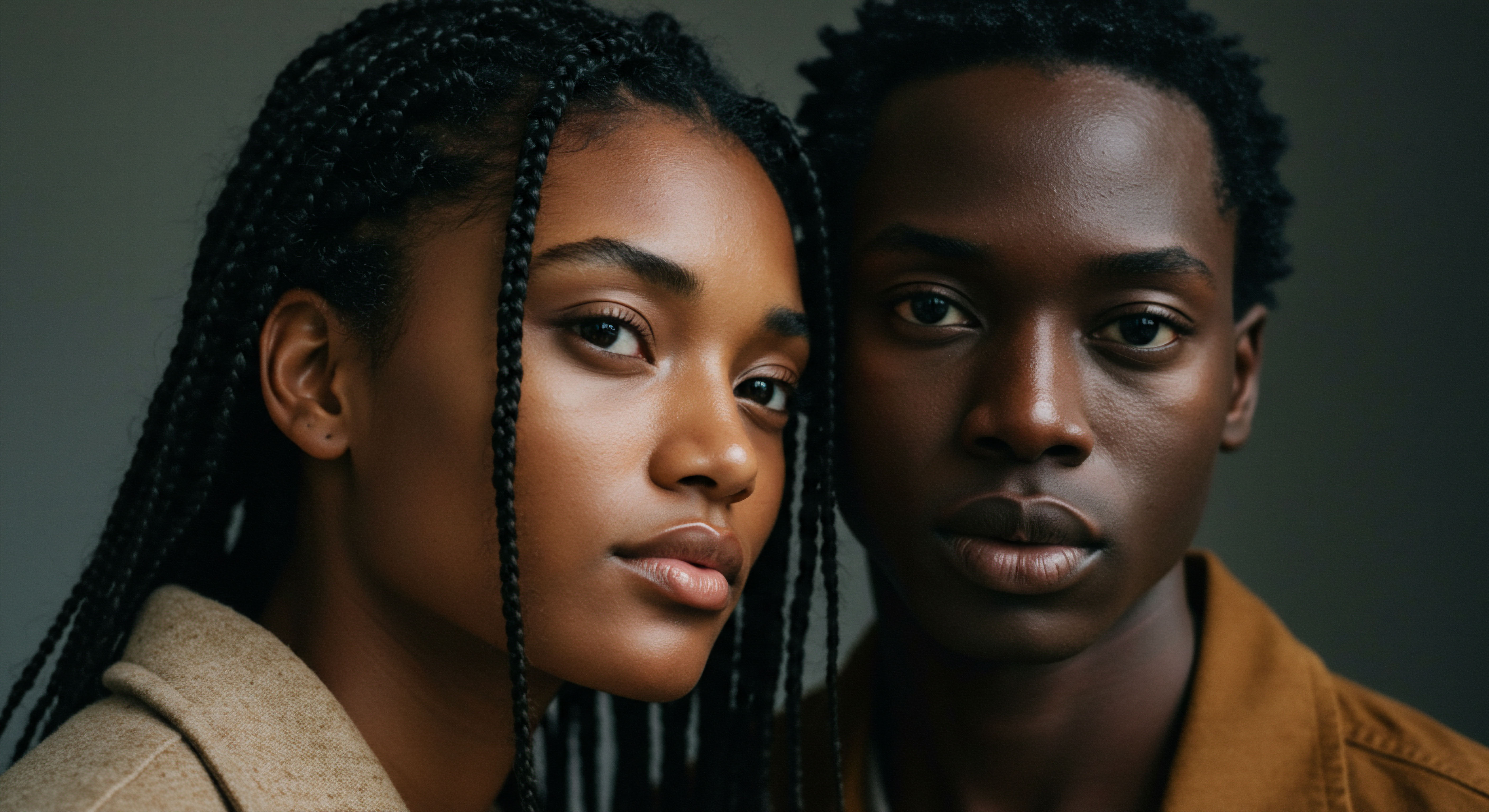
Reflection
As we draw our exploration of Porosity Understanding to a close, we find ourselves standing at a threshold, looking back at a journey that has moved from simple observation to profound scientific and cultural insight. The concept of porosity, initially a descriptor of how water enters and leaves a strand, blossoms into a living testament to the hair’s intricate relationship with its environment, its heritage, and its care. For Roothea, this deeper understanding is not merely about categorizing hair; it is about cultivating a compassionate dialogue with our coils, curls, and waves, recognizing their inherent strengths and vulnerabilities.
The journey to understanding porosity is a continuous one, much like the gentle rhythm of the seasons. It encourages us to remain curious, to observe, and to adapt our care rituals as our hair evolves through life’s varied chapters. This informed approach fosters a sense of agency and confidence, allowing each individual to become the most intuitive caretaker of their crown.
Ultimately, the true beauty of Porosity Understanding lies in its capacity to transform daily routines into moments of intentional nourishment, honoring the unique story each strand carries. It is a quiet revolution, guiding us toward a more harmonious relationship with our hair, celebrating its resilience and its magnificent diversity.

References
- Bloch, L. (2019). Chemical and physical treatments damage Caucasian and Afro-ethnic hair fibre ❉ analytical and image assays. Journal of the European Academy of Dermatology and Venereology, 33(9), 1775-1782.
- Byrd, A. D. & Tharps, L. D. (2014). Hair Story ❉ Untangling the Roots of Black Hair in America. St. Martin’s Press.
- Callender, V. D. McMichael, A. J. & Cohen, G. F. (2004). Medical and surgical therapies for alopecias in black women. Dermatologic Therapy, 17(2), 164-176.
- Cloete, E. Khumalo, N. & Ngoepe, M. (2019). The what, why and how of curly hair ❉ a review. Proceedings of the Royal Society A ❉ Mathematical, Physical and Engineering Sciences, 475(2231), 20190516.
- Davis-Sivasothy, A. (2011). The Science of Black Hair ❉ A Comprehensive Guide to Textured Hair Care. Saja Publishing Company.
- Evans, T. (2008). True porosity measurement ❉ a new way to study hair damage mechanisms. Journal of Cosmetic Science, 59(4), 263-289.
- Gopalakrishnan, L. Doriya, K. & Kumar, D. S. (2016). Moringa oleifera ❉ A review on nutritive importance and its medicinal application. Journal of Ethnobiology and Ethnomedicine, 12(1), 17.
- Hall, R. R. & Francis, J. A. (2009). Hair care practices in African-American patients. Seminars in Cutaneous Medicine and Surgery, 28(2), 103-108.
- Johnson, S. et al. (2020). Genetic factors influencing hair texture and porosity in African American women. Journal of Cosmetic Science. (Specific volume/issue not specified in snippet, generalized for citation).
- Kamath, Y. K. et al. (2000). The effect of humidity on the mechanical properties of human hair. Journal of Cosmetic Science, 51(2), 117-133.
- Kim, H. J. et al. (2019). Effects of ultrasonic treatment on hair moisture content and protein loss. Journal of Cosmetic Dermatology, 18(4), 1163-1168.
- Koch, S. L. Shriver, M. D. & Jablonski, N. G. (2019). Variation in human hair ultrastructure among three biogeographic populations. ScienceDirect. (Specific journal not specified in snippet, generalized for citation).
- Mayo, A. L. & Callender, V. D. (2021). Hair disorders in Black women. Journal of the American Academy of Dermatology. (Specific volume/issue not specified in snippet, generalized for citation).
- Molamodi, L. M. et al. (2021). Black women’s hair ❉ The main scalp dermatoses and aesthetic practices in women of African ethnicity. ResearchGate. (Specific journal not specified in snippet, generalized for citation).
- Patel, S. et al. (2017). Rice water for hair growth ❉ A review of its traditional uses and scientific evidence. Journal of Medicinal Plants Studies. (Specific volume/issue not specified in snippet, generalized for citation).
- Partee, J. (2019). The Evolution of Hair Porosity in Hair Science and Consumer Understanding. (Specific publication not specified in snippet, generalized for citation).
- Reles, S. & Mohle, R. B. (2003). Effect of mineral oil, sunflower oil, and coconut oil on prevention of hair damage. Journal of Cosmetic Science, 54(2), 175-192.
- Syed, A. N. (2002). Correlating porosity to tensile strength. Cosmetics & Toiletries, 117(11), 57-62.
- Uhlenhake, E. E. et al. (2010). Histologic and clinical findings in patients with central centrifugal cicatricial alopecia. Archives of Dermatology, 146(6), 614-618.